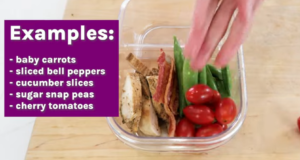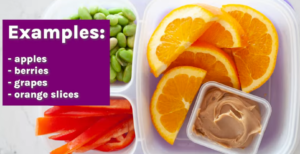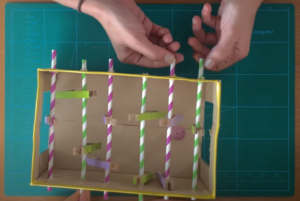Home
 How often have you as a parent, wished you could take a vacation day? Wished you could find a way to make it easier for yourself? The truth is, being a parent is one of the hardest jobs you could ever get hired to do. You are at the beck and call of someone who is between 20-inches and 20-feet tall. They dictate when you wake, when you sleep, and sometimes when you pee. Beyond that, not only do they control you, but you have to also teach them right and wrong. “No, you cannot live on soda and PB&J! Eat your peas…” Then, you flip the coin and a day goes right. You can focus on the cuddles and the laughter. It is a blessing and a curse and our goal is to help you keep the fun of it all!
How often have you as a parent, wished you could take a vacation day? Wished you could find a way to make it easier for yourself? The truth is, being a parent is one of the hardest jobs you could ever get hired to do. You are at the beck and call of someone who is between 20-inches and 20-feet tall. They dictate when you wake, when you sleep, and sometimes when you pee. Beyond that, not only do they control you, but you have to also teach them right and wrong. “No, you cannot live on soda and PB&J! Eat your peas…” Then, you flip the coin and a day goes right. You can focus on the cuddles and the laughter. It is a blessing and a curse and our goal is to help you keep the fun of it all!
Why Parenting is Hard
 The simplest answer out there is, “Because it cant be easy to raise tiny humans to be perfect.” We aren’t born perfect. We are born not knowing and need guidance constantly.
The simplest answer out there is, “Because it cant be easy to raise tiny humans to be perfect.” We aren’t born perfect. We are born not knowing and need guidance constantly.
The harder answer is a lot more complex. When we are growing up, we imagine ourselves being “better” parents to our kids. We imagine we will be the one who says, “yes” to 24/7 snack time, staying up all night, etc. Then we have them. We grow up and realize that snack time is not something we should do constantly. We want them to learn, we want them to be happy, healthy, and ultimately great adults. We don’t want to raise monsters.
Beyond that plan you have for yourself, you realize that all other plans go out the window, too. You can’t go out with friends, baby sitter is busy. You can’t eat dinner, baby is needing to be fed first. We can’t take a vacation, kids cannot miss that much school, rebellious teen says they refuse to go and by now you aren’t confident that teens should be left alone. What if they do something you wouldn’t approve of? It happens every day, but, “Not in my house!”
Stress and parenting go hand-in-hand. It starts the moment you see a line on a “pee-stick” and doesn’t go away as long as you draw breath. The good news is, you can have a vacation day. You can have a day where everything is grand.
Parenting Made Easier
 You cant take all the frustration out of parenting, but you can learn ways to improvise without losing your sanity. To have happy, healthy kids, focus your energy on letting them see how you behave and encourage them to follow through. For instance, if you say, “No games after 9-pm, then don’t let them see you playing games.” This is an extreme example, but often we tell kids to do something without setting a good example for them to follow. “Do as I say, not as I do.”
You cant take all the frustration out of parenting, but you can learn ways to improvise without losing your sanity. To have happy, healthy kids, focus your energy on letting them see how you behave and encourage them to follow through. For instance, if you say, “No games after 9-pm, then don’t let them see you playing games.” This is an extreme example, but often we tell kids to do something without setting a good example for them to follow. “Do as I say, not as I do.”
Make plans for family game night and actually spend time talking out problems at school or bonding over a bowl of popcorn. The more you show them that you are there for the long haul, the more they will turn to you. Once you have that routine established, you will get more kisses, cuddles, and thank you’s than you can imagine. It will also allow you to relax and savor the moments a little more often.
Most Importantly- LAUGH OFF BAD DAYS!
Tips For Packing A Healthy Lunch
Packing a school lunch effectively requires a balance of nutrition, safety, and convenience. To start, selecting the right cooler is essential. Look for an insulated lunchbox that offers adequate temperature control to keep perishable items fresh until lunchtime. A soft-sided cooler with multiple compartments can help separate hot and cold foods, while hard-shell options tend to provide better insulation.
Packing Preparations
 When packing the lunch itself, aim for a variety of food groups to ensure a balanced meal. Include proteins like turkey slices or hard-boiled eggs, whole grains such as whole grain bread or wraps, and a rainbow of fruits and vegetables. Pre-packaged items can be convenient, but homemade options allow for better control over ingredients and portion sizes. Consider incorporating fun shapes or colors to make the meal visually appealing, which can encourage kids to eat healthier.
When packing the lunch itself, aim for a variety of food groups to ensure a balanced meal. Include proteins like turkey slices or hard-boiled eggs, whole grains such as whole grain bread or wraps, and a rainbow of fruits and vegetables. Pre-packaged items can be convenient, but homemade options allow for better control over ingredients and portion sizes. Consider incorporating fun shapes or colors to make the meal visually appealing, which can encourage kids to eat healthier.
Don’t forget to include an ice pack to maintain a safe temperature for perishable foods. This is particularly important for items like yogurt, cheese, or deli meats, which can spoil if left at room temperature for too long. Ensure that your cooler is easy for your child to carry, so it fits comfortably in their backpack. There are plenty affordable coolers options via coolers on sale website, which reviews all coolers.
Finally, encourage your child to participate in the lunch-packing process. This can help them develop healthy eating habits and take ownership of their meals. By teaching them to select their favorite foods and pack their own lunches, you’ll create a more enjoyable lunchtime experience that satisfies their tastes and nutritional needs.
Healthier Options Vs School Provided Lunch
 When seeking healthier food choices instead of traditional school lunches, there are numerous delicious and nutritious options to consider. One alternative is wraps made with whole grain tortillas, filled with lean proteins like turkey or chicken, and plenty of fresh vegetables. These are portable and fun to eat, making them an appealing choice for kids. Bento boxes are another great idea, allowing for a variety of small portions of sliced fruits, veggies with dip, nuts, cheese cubes, and whole grain crackers. This approach keeps lunches interesting and encourages children to try different foods.
When seeking healthier food choices instead of traditional school lunches, there are numerous delicious and nutritious options to consider. One alternative is wraps made with whole grain tortillas, filled with lean proteins like turkey or chicken, and plenty of fresh vegetables. These are portable and fun to eat, making them an appealing choice for kids. Bento boxes are another great idea, allowing for a variety of small portions of sliced fruits, veggies with dip, nuts, cheese cubes, and whole grain crackers. This approach keeps lunches interesting and encourages children to try different foods.
DIY Lunchables can also be a hit, featuring whole grain crackers, sliced meats, cheese, and sides of fruits or veggies. This customizable option lets kids assemble their own meals, making lunchtime interactive. For a refreshing twist, consider packing salads made with dark leafy greens, colorful vegetables, and proteins such as grilled chicken or chickpeas, with dressing kept separate to maintain freshness.
Cool and Warm Options
Smoothie bowls offer a nutritious option too; blending fruits with yogurt or a milk alternative and topping with granola, seeds, and fresh fruit creates a vibrant meal. Homemade muffins made with whole grain flour and added fruits or veggies can serve as a filling treat, while no-bake energy bites made from oats, nut butter, and mix-ins like chocolate chips or dried fruit provide a quick snack option. Finally, during colder months, packing thermoses with healthy soups or stews, rich in vegetables and lean proteins, can deliver a warm and satisfying meal. By choosing these healthier alternatives, you can ensure that kids have tasty, nutritious lunches that keep them energized and focused throughout their school day.
Hands On Projects For Homeschoolers
For homeschooling moms seeking hands-on projects to enhance their children’s learning experiences, there are several engaging and educational activities to consider. One effective approach is integrating science experiments into daily lessons. Simple projects like creating a volcano eruption with baking soda and vinegar or growing crystals from salt can vividly illustrate scientific concepts and spark curiosity.
Arts, Crafts & Language
 Additionally, incorporating craft-based activities can reinforce subjects like history and geography; for example, building a diorama of an ancient civilization or crafting a model of the solar system provides a tactile and visual way to explore these topics. Language arts can also benefit from hands-on projects, such as designing and illustrating a homemade storybook or creating a personal dictionary with unique words and definitions. These projects not only make learning more interactive but also help children retain information through creative and practical applications.
Additionally, incorporating craft-based activities can reinforce subjects like history and geography; for example, building a diorama of an ancient civilization or crafting a model of the solar system provides a tactile and visual way to explore these topics. Language arts can also benefit from hands-on projects, such as designing and illustrating a homemade storybook or creating a personal dictionary with unique words and definitions. These projects not only make learning more interactive but also help children retain information through creative and practical applications.
Entry-Level Engineering Projects:
Start with foundational projects that introduce basic engineering concepts. Building simple structures with materials like popsicle sticks or LEGO bricks can teach principles of stability, balance, and design. For instance, constructing a bridge or tower from these materials helps students understand load distribution and structural integrity. Another entry-level project is creating a basic circuit with a battery, light bulb, and wires, which introduces the fundamentals of electricity and circuitry. Simple robotics kits are also excellent for beginners, allowing students to assemble and program basic robots to perform tasks or follow commands, thereby learning about mechanical and software engineering in an accessible way.
Advanced Projects:
 For more advanced learners, consider tackling projects that require a deeper understanding of engineering principles and problem-solving skills. Designing and building a small-scale catapult or trebuchet can explore concepts of physics, mechanics, and precision engineering. Students can further their learning by experimenting with different materials and designs to optimize performance. Another advanced project is developing a miniature solar-powered vehicle. This project integrates concepts from renewable energy and mechanical engineering, challenging students to design a vehicle that operates efficiently on solar power. Additionally, delving into 3D modeling and printing can provide a comprehensive experience with design and manufacturing processes, as students create and produce their own custom designs.
For more advanced learners, consider tackling projects that require a deeper understanding of engineering principles and problem-solving skills. Designing and building a small-scale catapult or trebuchet can explore concepts of physics, mechanics, and precision engineering. Students can further their learning by experimenting with different materials and designs to optimize performance. Another advanced project is developing a miniature solar-powered vehicle. This project integrates concepts from renewable energy and mechanical engineering, challenging students to design a vehicle that operates efficiently on solar power. Additionally, delving into 3D modeling and printing can provide a comprehensive experience with design and manufacturing processes, as students create and produce their own custom designs.
These projects not only build technical skills but also encourage creativity and critical thinking, making them invaluable tools for a well-rounded engineering education at home.
Vacuums & Pumps
Understanding the basics of a vacuum pump can be an exciting and educational experience for homeschooling students. A vacuum pump is a device that removes air and other gases from a sealed container to create a vacuum, or a space with reduced pressure. Here’s a simple overview to introduce the concept:
What Is a Vacuum Pump?
A vacuum pump works by removing air and gases from a sealed environment. This process lowers the pressure inside the container compared to the outside atmosphere. The basic principle is to create a low-pressure area, which can then be used for various scientific and industrial applications.
How Does It Work?
There are several types of vacuum pumps, but the most common ones for educational purposes are the rotary vane pump and the diaphragm pump. The rotary vane pump uses a rotating mechanism to push air out of the pump chamber, while the diaphragm pump uses a flexible diaphragm to create a vacuum. Both types operate on the principle of reducing air pressure inside a chamber. A great way to dive into the inter workings are using a vacuum pump rebuild kit , to see how each component works together.
Hands-On Activity: Simple Vacuum Pump Demonstration
To demonstrate how a vacuum pump works, you can create a basic setup at home. Start with a small, clear plastic jar and a bicycle pump (which can act as a simple vacuum pump). Attach a one-way valve to the jar so air can only flow out but not in. Using the bicycle pump, you can manually remove air from the jar, illustrating how the vacuum pump decreases air pressure.
Mothers Concerned With Food Safe Clear Coats- Epoxy
Mothers concerned about using food-grade clear coats, such as epoxy resin, often focus on the health and safety implications of these products. Although food-grade epoxy resins are specifically designed to be safe for contact with food once fully cured, several considerations remain important. One primary concern is the potential for chemical exposure during application. While these resins are safe once cured, the fumes released during mixing and application can be harmful if inhaled, and direct skin contact can lead to irritation or allergic reactions. To mitigate these risks, it’s essential to ensure that the application area is well-ventilated and that protective gear, such as gloves and masks, is used.
Proper Pouring Is Key To Success
Another concern is the proper curing of the resin. Food-grade epoxy needs ample time to fully cure before any food contact occurs, as the resin might release residual chemicals during the curing process. Therefore, ensuring that the resin is completely cured and that the workspace remains free of contamination is crucial. Additionally, there is the issue of residue and proper cleaning; any leftover resin and cleaning materials must be disposed of according to safety guidelines to prevent environmental and health hazards.
Is Epoxy Really Safe For Food Contact?
Moreover, while food grade clear coat are designed to be safe for use in contact with food, there is always a need for vigilance in following manufacturer guidelines and safety data sheets. For mothers, especially those with young children, taking these precautions helps ensure that the materials used in food-related projects do not pose health risks and that their environment remains safe. Proper education and adherence to safety practices are key in addressing these concerns effectively.
How to Properly Clean
Cleaning food-grade epoxy resin properly is crucial to ensure it remains safe for use, particularly in applications where it will come into contact with food. Here’s a step-by-step guide to cleaning food-grade epoxy resin:
1. Gather Supplies:
- Cleaning Solution: Use a mild detergent or soap mixed with water. For tougher residues, isopropyl alcohol or a dedicated epoxy resin cleaner may be used.
- Soft Cloths or Sponges: Non-abrasive cloths or sponges will help avoid scratching the epoxy surface.
- Warm Water: Helps dissolve residues and makes cleaning more effective.
- Rubber Gloves: Protect your hands from any potential irritation.
2. Initial Wipe Down:
- If the epoxy is still wet, gently wipe away any excess resin with a clean, dry cloth or paper towel to prevent it from setting and becoming more difficult to clean.
3. Apply Cleaning Solution:
- Mix a small amount of mild detergent or soap with warm water. Dip a soft cloth or sponge into the soapy water and gently clean the epoxy surface. For surfaces with more stubborn residues, you can use isopropyl alcohol or an epoxy cleaner according to the manufacturer’s instructions.
4. Scrub Gently:
- Use a soft, non-abrasive sponge or cloth to scrub the epoxy surface gently. Avoid using abrasive scrubbers or harsh chemicals, as these can damage the resin’s surface and potentially make it unsafe for food contact.
5. Rinse Thoroughly:
- Rinse the epoxy surface with clean, warm water to remove any soap or cleaning solution residue. Ensure that all cleaning agents are thoroughly washed off, as residual chemicals can affect the safety of the epoxy, especially if it will be used in food-related applications.
6. Dry the Surface:
- Dry the cleaned epoxy surface with a clean, dry cloth. Ensure it is completely dry before using or applying additional coatings. This helps prevent any moisture from compromising the epoxy’s integrity or safety.
7. Inspect the Surface:
- After cleaning and drying, inspect the epoxy surface for any remaining residues or signs of damage. If any areas still have residue or appear compromised, clean again or consider reapplying a fresh coat of food-grade epoxy if necessary.
8. Regular Maintenance:
- For surfaces that come into regular contact with food, periodic cleaning and inspection are important to maintain safety and cleanliness. Regularly clean the surface following the same process to prevent buildup and ensure continued safety.
9. Follow Manufacturer’s Instructions:
- Always adhere to any specific cleaning recommendations provided by the epoxy resin manufacturer. Different products might have particular requirements for cleaning and maintenance.
By following these steps, you can effectively clean food-grade epoxy resin and ensure it remains safe and hygienic for food-related uses.
Prepping The House For Homeschool
 The world is crazy right now. The pandemic known to us all as “Covid” or “Corona” has turned everything that we thought we knew upside down. People who thought they had a steady job, have had to start staying home. Many have lost their jobs and now must rely on the state for help. In other situations, moms or dads are prepping the house for homeschool, as well as take care of the home, work from home, and more. It is a world of adjustments to be made and not all of them are easy.
The world is crazy right now. The pandemic known to us all as “Covid” or “Corona” has turned everything that we thought we knew upside down. People who thought they had a steady job, have had to start staying home. Many have lost their jobs and now must rely on the state for help. In other situations, moms or dads are prepping the house for homeschool, as well as take care of the home, work from home, and more. It is a world of adjustments to be made and not all of them are easy.
A New Way of Life
 The pandemic has changed everything we know about our life and our situation. We have always known it was important to wash our hands and try to protect ourselves from germs. Now though, it pays to be extra cautious. Obsessively washing hands, wearing masks, and avoiding human contact out of fear that someone may sneeze.
The pandemic has changed everything we know about our life and our situation. We have always known it was important to wash our hands and try to protect ourselves from germs. Now though, it pays to be extra cautious. Obsessively washing hands, wearing masks, and avoiding human contact out of fear that someone may sneeze.
It keeps us home, when we would normally be out eating dinner. It is keeping us home from work if there is a chance we can do so. Schools are unprepared, and our kids are being kept home out of fear. It is a lot of changes in a somewhat short time. And according to most moms, the home school stuff is the hardest. It requires a lot of preparation and a certain amount of commitment that is not always easy.
Prepping for Home School
 As a parent, you are your child’s first and most important teacher. Ask any parent and they will tell you the same thing. However, teaching kids at home to work out complex math problems, algebra, how to read and write perfectly: its a bit different.
As a parent, you are your child’s first and most important teacher. Ask any parent and they will tell you the same thing. However, teaching kids at home to work out complex math problems, algebra, how to read and write perfectly: its a bit different.
You need computers, you need work stations or desks, you need to have a lesson plan or lesson ideas that can teach, and you must also have a good knowledge of what you are trying to teach your child. You can keep learning fun with games. Perhaps use a tabletop dice tray and implement it into teaching little ones to count? You could also use it to play with sight words, ABCs, and more.
Science experiments with kids is always fun. You should look online to discover ideas. Pens, pencils, paper, etc are also things that you will want to make sure you have a lot of. Printer ink is also a good choice so you can print out lessons from your school if needed.
Support for Parents
Depending on the school option you feel is best for your child, you may get help with books and other supplies as well. Not all schools are making that offer, but many of them are. If yours doesn’t, there are Facebook groups, websites, and other places you can go to find out what is required of you during these challenging times.
The big thing is to remember that you are not alone in this. There are families from coast to coast and even in other countries who are going through the exact same challenges today that you are. Together, we can all get through it and come out better on the other side of this pandemic.
